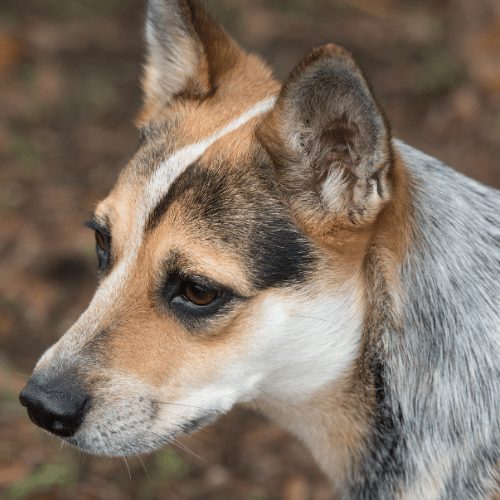Texas Heeler
May 26, 2021 2021-06-07 13:55Table of Contents
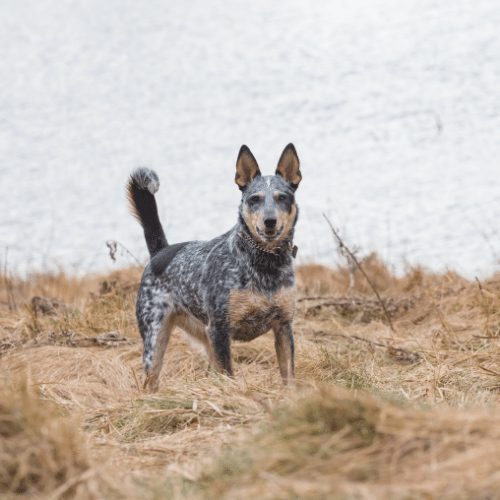
Origin and History of the Texas Heeler
The Texas Heeler is a mixed breed that’s fun, energetic, but also loyal and protective. These dogs have become popular in the recent decade, but they could originally be found only on farms or ranches.
As an excellent watchdog, you can expect your Texas Heeler to protect you and follow you around. To find out more about the origin of this herding breed, but also everything you should know before becoming a Texas Heeler parent, keep on reading.
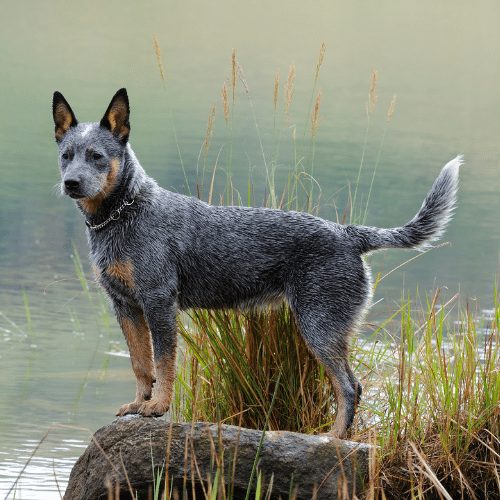
Australian Cattle Dog
This breed is medium-sized and short-coated. It was first developed in Australia with the purpose of driving cattle. These dogs are energetic, loyal, protective, and courageous. They tend to live for up to 15 years.
Health-wise, the Australian Cattle Dog is more likely to develop progressive retinal atrophy, osteochondrosis, elbow dysplasia, as well as deafness. As they grow older, their sight can become poorer than that of other breeds.
Females can also suffer from reproductive problems, such as pyometra, false pregnancy, or infertility.
Australian Shepherd
Despite its name, the Australian Shepherd was first developed not in Australia but the United States. It was recognized as a breed in the past century.
These dogs have a luscious coat, and they are anything but hypoallergenic. They love to spend time outdoors, they are smart, also work-oriented, and they will protect their own as best as possible.
When it comes to the conditions that they can suffer from, it’s widely known that Australian Shepherds can develop elbow and hip dysplasia, as well as cataracts, epilepsy, and recurring ear infections.
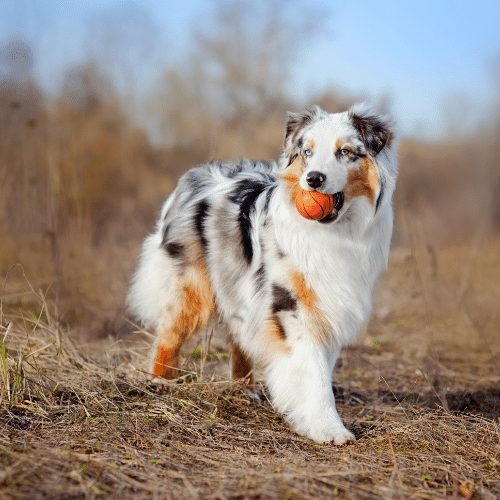

Border Collie
Although according to the breed standard, a Texas Heeler puppy should result from mixing an Australian Cattle Dog with an Australian Shepherd, there can be exceptions.
The Australian Cattle Dog is a must, but if mating with an Australian Shepherd is not possible, the latter can be replaced with a Border Collie. As incredible as it might sound, the resulting puppy can still be recognized as being a true Texas Heeler.
The Border Collie is an Anglo-Scottish breed that was specially developed for herding. All dogs are intelligent, athletic, and full of energy.
In terms of health, Border Collies are more likely to develop osteochondritis, progressive retinal atrophy, as well as Collie Eye Anomaly (which shows up in puppies younger than 2).
Appearance of the Texas Heeler
Similarly to its ancestors, the Texas Heeler is a medium-sized dog breed. It has a height of 17 to 22 inches. While the majority of these dogs end up weighing 25 to 50 pounds in their adulthood, there can be exceptions to the rule.
Those that are used for herding are slimmer, while those that are kept as pets have a tendency to develop obesity.
When it comes to its coat, the Texas Heeler dog breed is known for its mix of colors, such as white, black, brown, or grey. Most dogs are born with their tail bobbed, and this is one of the features they are loved for. They also have floppy ears when they’re born, but approximately a week later, they become pointy.
Texas Heeler Temperament
Texas Heelers can be trained to do almost anything, because they love to serve their owners. They are very intelligent, and they care for their guardians. Sometimes, they can get too protective, which can be a nuisance. Puppies should be socialized either at the kennel (or shelter) to be able to make friends fast.
Something interesting about this dog breed is that it thrives when it is put to work. These dogs hate sitting around all day, and they can become unhappy if they are bored. Being known for their energetic character, they make the best choice for people who spend a lot of time outdoors or who at least live in a house, not an apartment.
Another typical feature of a Texas Heeler is that it can be a bit obsessed with herding. If you don’t curb their enthusiasm, your dog will try to herd you or your guests on every occasion.
Although a Texas Heeler’s personality can be a little challenging to manage, training makes it easier. These dogs are very smart and loyal, so they will make invaluable members of your family.
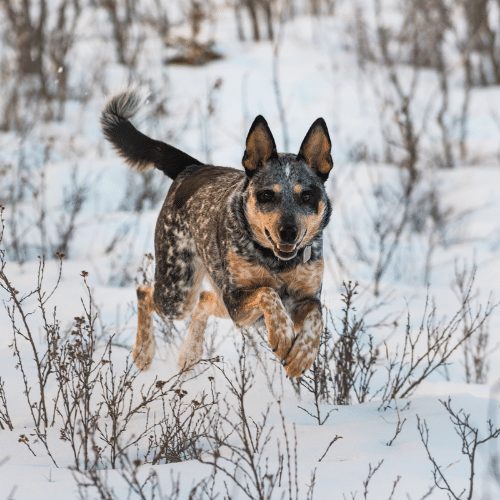

Texas Heeler Health and Care
Even though crossbreds are said to develop fewer medical conditions compared to purebreds, the Texas Heeler still has a genetic history that makes it predisposed to some health issues.
Here are several examples:
- Hip and elbow dysplasia
- Eye health problems (progressive retinal atrophy, cataracts, distichia)
- Epilepsy
We recommend taking your canine friend to the veterinary clinic once or twice a year to make sure that none of these health problems are developing. Moreover, Texas Heelers are known for becoming obese if they don’t get enough exercise, so you have to make sure that you walk your dog at least for an hour every day.
The rest of the care is standard for all dogs, meaning brushing their teeth, trimming their nails, and consulting the vet whenever you think something is wrong.
Texas Heeler Grooming Tips
Texas Heelers don’t tend to shed more than any other dogs, but they do shed, so they are not recommended for people with breathing problems such as asthma.
Their coat is very easy to groom, and if your pet is patient enough, you can give them a haircut at home. If not, you can take them to an experienced groomer.
What’s important to note is that a Texas Heeler’s fur is not dense, so it is not well-suited for cold climates. As such, you will have to supply your dog with a coat in the winter. It wouldn’t hurt if you also applied some sunscreen on your canine friend’s nose, especially in the summer.
Training Your Texas Heeler
Texas Heelers love to be put to work, and they have strong herding instincts. They respond best to positive reinforcement, but make sure to avoid giving your dog too many treats (they should make up about 10% of their diet, not more).
Puppies have to be socialized either at the kennel, or you have to do it yourself as early on as possible. If you do, you will find that this dog breed is excellent for families with children, too, as it tends to get attached and protective with kids.
Although you might have no use for these dogs’ herding capabilities, you can at least train your dog for sports like flyball, for example. Texas Heelers are very fast learners.
Deciding on a Texas Heeler
If you do not know whether this is the right breed for you or not, it’s always a good idea to do a little reading on it. You can use online forums, educational videos, and even social media groups to see what people are saying about owning a Texas Heeler.
If you have the time, you can also get in touch with a breeder in your area and ask them whether they wouldn’t allow you to visit their kennel.
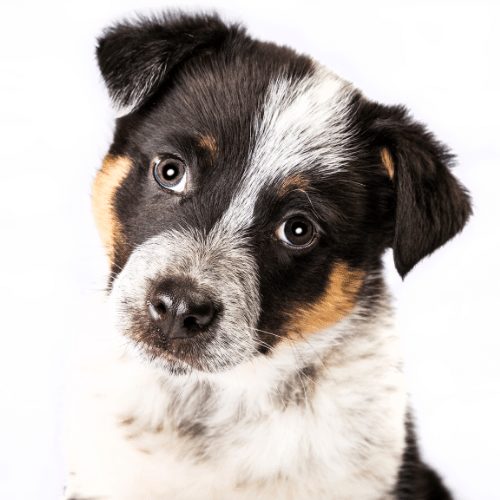
A Texas Heeler is not the right dog for you if:
- You’re out of the house for more than 9-10 hours per day
- You live in a small apartment
- You have no time for long walks
A Texas Heeler is the right dog for you if:
- You have a sizable yard
- You have plenty of time for walks and play
- You can afford regular vet visits or can invest in pet insurance
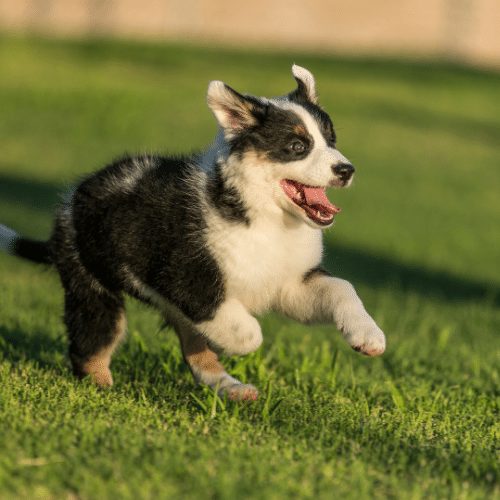
Finding your Puppy Breeder
Getting your dog from the right person can save you a lot of time, effort, and hardship in the long run. If your canine friend ends up suffering from genetically transmitted diseases, both of you will suffer — and so will your wallet, as pragmatic as it might be to point this out.
Responsible breeders will tell you whether the puppy’s parents have had any medical conditions that could have been passed on to their young ones. Before choosing a breeder, look for online reviews and see what people are saying about them.
Questions For Your Breeder
- How long have you been breeding Texas Heelers for?
- Is this the only breed you specialize in?
- Do you have any references?
- Are the puppy’s parents healthy?
- Can we talk to the puppy’s parents' vet?
How much is a Texas Heeler Puppy?
The average price of a Texas Heeler is approximately $400-$500, but it’s not unusual to pay more for a well-bred individual. Some can get as pricey as $1,000 or more, especially if they come from a good line.
The average yearly cost of owning a dog, including a Texas Heeler is $500 to $700, and that only includes basic vet care. Food, treats, and toys can cost up to $400 per year or more.
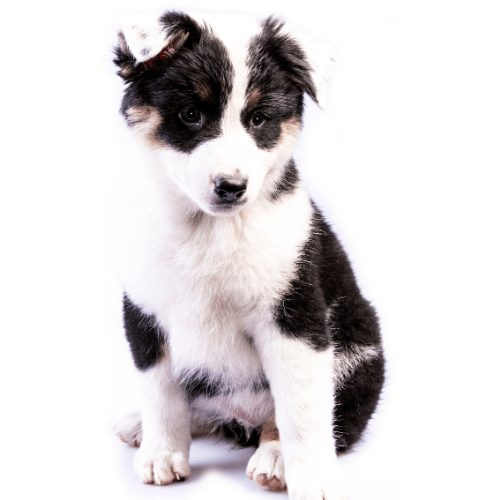
What Texas Heeler owners say:
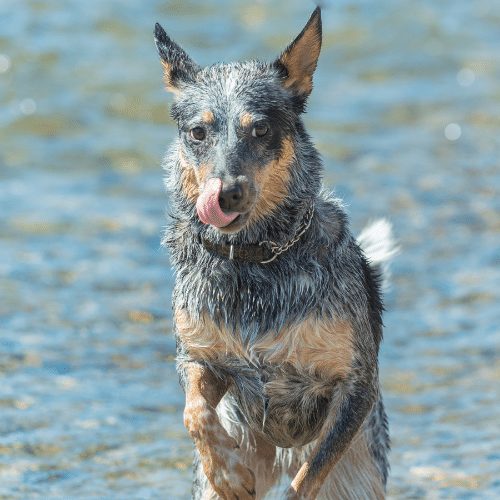
He kept nipping when he was a puppy, but I quickly trained him that it wasn’t nice for me. Daniel is so full of energy and happy that he just makes my days better in every way.

It was a little difficult for us to handle the herding, and she does it even now when she’s 5. But we got used to it, and she also did it less, so it doesn’t bother us that much. We don’t regret getting a Texas Heeler, especially since we rescued her from a shelter.

